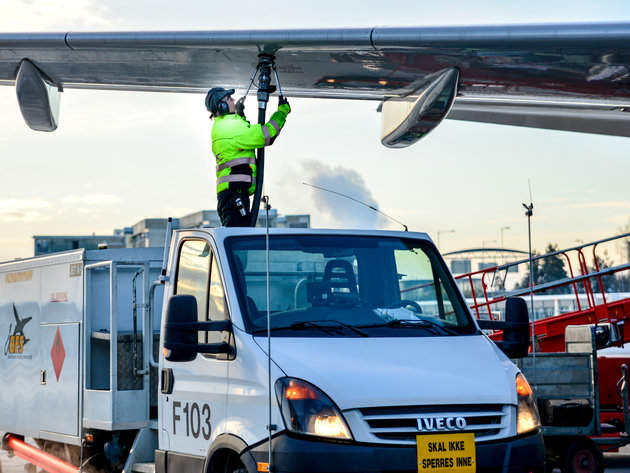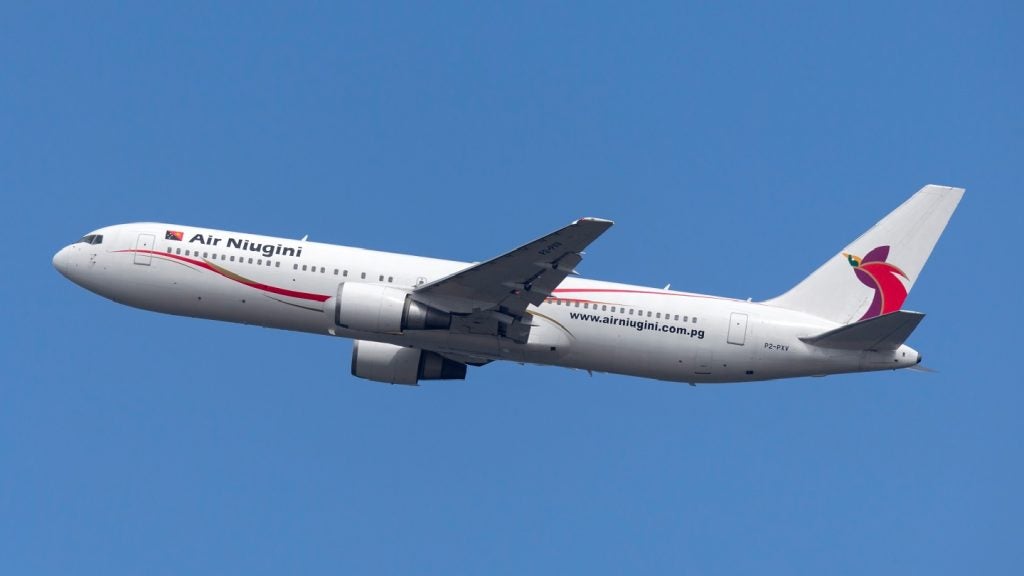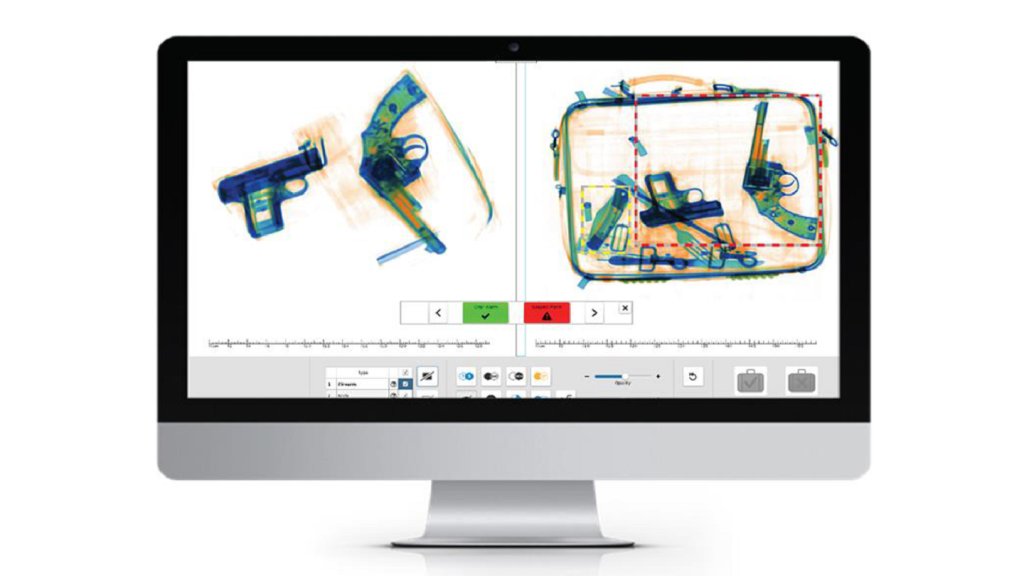
Due to global instability of traditional fuel prices, as well as increased pressures on the transport sector to drastically reduce its greenhouse gas emissions, biofuels have become a strong contender in the effort to achieve carbon-neutral growth.
In the aviation sector, biofuels are currently both rare and expensive. In Europe, there has been no regular production of alternative aviation fuels to date and use has been limited mainly to demonstration flights, pilot tests and research endeavours.
But in January 2016, Oslo Airport became the first hub in the world to receive regular deliveries of biojet fuel and offer it “on tap” to all airlines -the first time an airport has used its normal supply mechanism for biofuels delivery.
Oslo’s initiative marks a significant step forward in demonstrating the feasibility of bio jet fuels and it comes at a good time. During the Paris talks in December 2015, air transport was earmarked as one of the top priority sectors to reduce its emissions. The sector’s contribution to climate change represents 2% of man-made CO2 emissions and at the current rate it could reach 3% by 2050 if left unchecked.
Although today’s aircraft are 70% more fuel-efficient than those of 40 years ago, the worldwide aviation industry still consumes between 1.5 and 1.7 billion barrels of traditional jet fuel annually.
Potential emissions savings from using biofuels may be as large as 80% depending on feedstock type and the production processes, according to the European Aviation Environmental Report published in January 2016 by the European Aviation Safety Agency (EASA), the European Economic Area (EEA) and Eurocontrol.
How well do you really know your competitors?
Access the most comprehensive Company Profiles on the market, powered by GlobalData. Save hours of research. Gain competitive edge.

Thank you!
Your download email will arrive shortly
Not ready to buy yet? Download a free sample
We are confident about the unique quality of our Company Profiles. However, we want you to make the most beneficial decision for your business, so we offer a free sample that you can download by submitting the below form
By GlobalDataHowever, a major challenge is the lack of a sustainable source for the production of biofuels on a commercial scale.
Targets set under the EU’s Renewable Energy Directive (RED) require EU member states to source 3.5% of their transport energy from biofuels by 2020. Similarly, the European Advanced Biofuels Flightpath aims to achieve an annual production rate of two million tonnes of sustainably produced biofuel for civil aviation by 2020. At current levels of progress, both these targets are unlikely to be achieved, according to the European Aviation Environmental Report.
Nevertheless, a number of airports are scaling up their biofuel production and supply mechanisms in an attempt to create “bioports” around the world.
Environmental, social and economic benefits of shifting to biofuels
Biofuels are produced from renewable biological resources such as plant material. First generation biofuels have been used in various industries including transportation for a number of years, but their green credentials are unreliable, since they compete with food production and fresh water use, as well as causing deforestation and reduced biodiversity.
Therefore, European legislation put in place to speed up biofuel adoption requires aviation bodies to only use second-generation biofuels, often sourced from renewable feedstocks such as jatropha, camelina, algae and halophytes.
“If you’re using aviation biofuels from sources such as palm oil, that’s actually worse than using traditional fuels,” says Carlos Calvo Ambel, policy analyst at Transport & Environment, an European NGO campaigning for cleaner transport. “The only way to reduce the impact of the sector using biofuels is by using second-generation biofuels, produced from waste.”
The Air Transport Action Group (ATAG) notes that the use of camelina feedstock yielded the most positive results, achieving an 84% reduction in lifecycle emissions compared to fossil fuels.
An important factor to note however is that, emissions reductions are not achieved in the actual combustion phase, but rather in the production phase of the biological material, and in the process of conversion into fuels. Biofuels also contain fewer impurities such as sulphur and the biomass crops further absorb CO2 from the air during the growing process.
Apart from the environmental benefits, the transition poses further economic and social benefits. With fuel representing one of the biggest expenses for the aviation industry, resorting to the less volatile market of biofuels production could offer both costs savings and peace of mind for the industry.
ATAG also highlights that developing countries could draw many economic benefits from growing second-generation biofuel crops, and the creation of this new industry could attract a generous workforce from their local communities.
Building bioports for a safer supply mechanism
Back in 2012, Canada’s Porter Airlines achieved a major breakthrough for the biofuels market, when a number of test flights proved that renewable and regular jet fuel could be blended without compromising on performance.
At the time, Porter Airlines director of environmental affairs Teresa Ehman said: “The bigger challenge is coming up with an efficient and economical way of safely getting fuel from a production facility all the way to an airplane’s wing.”
In 2014 the answer to that challenge came from Sweden, when Karlstad Airport became the first bioport in the world. Karlstad installed an operational tank facility, known as a bio jet fuel station, exclusively dedicated to supplying sustainable jet fuel to all commercial flights departing from the airport.
At Oslo, Lufthansa Group, KLM and SAS are the first to participate in the initiative, which will see an initial supply of 1.25 million litres of biofuel provided by SkyNRG and Air BP, with a progressive increase of volume planned for the near future. The goal is to eventually establish a regular supply system.
“We want to demonstrate that airports can readily access biofuel with relative ease, utilising existing physical infrastructure,” said Air BP CEO David Gilmour. “We anticipate that this will increase interest and demand, as well as contributing to a sustainable biofuel future for the aviation sector.”
Progress is also underway in Amsterdam, where Schipol Airport is looking to follow suit in creating a bioport. A letter of intent signed in 2013 by Schipol Airport, SkyNRG, the Dutch Government, KLM, Neste Oil and Port of Rotterdam promised to strengthen the production of sustainable jet fuel in the Netherlands. The initiative aims to set up a supply chain, with a particular focus on sourcing the necessary feedstock.
According to ATAG, Schipol hopes to have the scheme, which will rely on biofuel made from used cooking oil, up and running by 2017.
In Australia, SkyNRG is also working with Brisbane Airport to transform it into the first bioport in the Asia-Pacific region.
A memorandum of understanding was signed in 2013 by the two parties and Virgin Australia, committing them to a feasibility study on the bioport’s construction. The study looks at “researching the locally available feedstocks in Queensland, sustainable and cost-effective methods for transporting them and the most appropriate technology for converting them into biofuel”, according to a press release.
Other initiatives looking at the expansion of biofuel production include the European Advanced Biofuels Flightpath, which aims to construct “advanced biofuel production plants” in Europe. The first set of plants are hoped to start operations this year, with the second set to follow in 2020.
In the UK, a £340m scheme by British Airways to turn London’s rubbish into green jet fuel fell through at the start of this year. The airline partly blamed the government for its lack of support for the plan, which would have created 16 million gallons of sustainable jet fuel. Crude oil price instability, as well as unstable investment, were also reported as strong contributing factors to the scheme’s failing.
Commercial aviation is a long way away from biofuels
Despite the ongoing race amongst airlines, airports and organisations to pioneer the latest biofuel innovations, the hurdles to widespread implementation are still considerable.
At present, biojet fuel costs twice as much as traditional jet kerosene, which dominates today’s market.
“It doesn’t matter is it’s available or not in all the airports, as long as it is that expensive,” Ambel says.
While the science of sourcing fully sustainable biofuels is still grainy, jumping into the biofuel bandwagon can be seen as a very risky move.
“At the moment, there are limited resources, so the only two options to obtain biofuels is either to cut down forests or make people starve – it’s either one or the other,” Ambel adds. “As long as biofuels can be linked to deforestation, using them is a major brand risk for airlines, and they are aware of that.”
In order to move forward at greater speed, ATAG makes a few recommendations: ensuring a steady supply of feedstock, followed by putting in place the facilities needed to refine and blend the biofuel with current jet fuel. Normalising costs, removing risky competition for access with other transport sectors and governmental support are also key factors.
But until these measures are in place, little progress can be anticipated in the near future, as Eurocontrol notes, adding: “It is assumed that these fuels will play a large role in reducing aviation greenhouse gas emissions in the coming decades. However, regular production of aviation alternative fuels is projected to be very limited in the next few years, and thus it is unlikely that the roadmap 2020 target will be achieved.”







